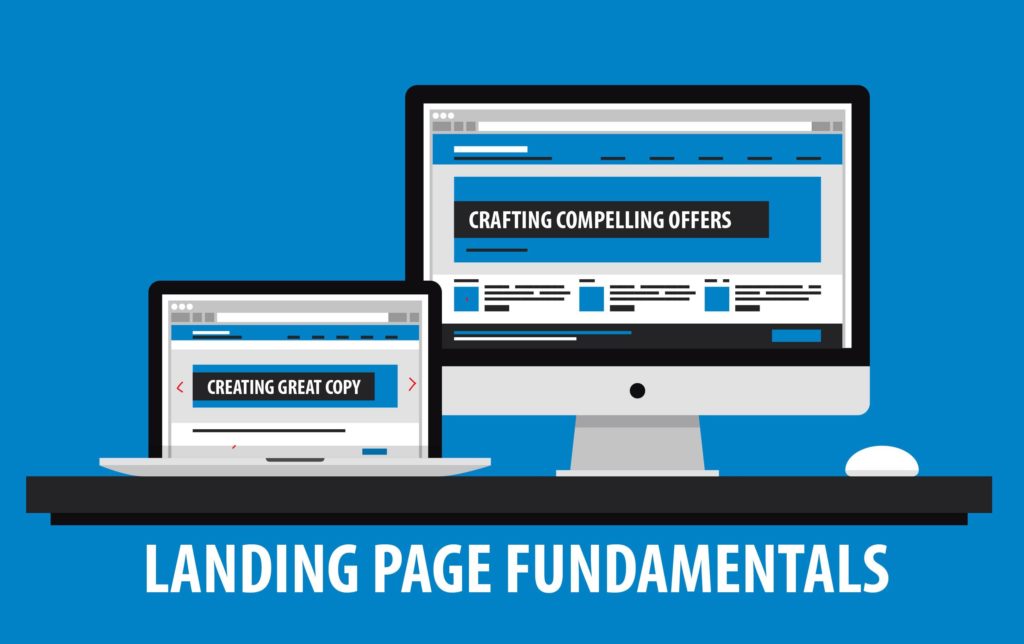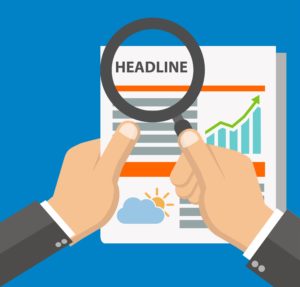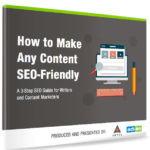A landing page is one of the most important tools a company can use for its sales and marketing efforts. It’s often the first impression a prospect has of your company. It’s also the first page a visitor sees once they engage with your marketing efforts. You’re spending a lot of marketing dollars to drive visitors to your site through online ad campaigns, email promotions, SEO, and other marketing channels – so your landing page really needs to pay off.
visitor sees once they engage with your marketing efforts. You’re spending a lot of marketing dollars to drive visitors to your site through online ad campaigns, email promotions, SEO, and other marketing channels – so your landing page really needs to pay off.
In Landing Page Fundamentals part 1, we covered the anatomy of a successful landing page. But just building it does not mean people will come; and getting people to come does not mean they’ll take that all-important next action, and convert.
So how do you create landing pages that convert? A strong offer and persuasive copy are the two most important tools to drive higher conversions. Let’s dive in:
Creating Great Copy
There are four key components of effective landing page copy. The header copy (this may also include sub-header copy), an introductory paragraph, benefit statements, and a call to action. Let’s look at each of these in detail.
1. Strong Headline Copy
 The headline needs to describe the offer and benefit in plain language. A visitor needs to understand what you’re offering in three seconds or less by glancing at the headline. Make sure that any offer or promotion you made wherever the reader found your link (in social media, on a web page, in an ad) connects with what’s in the headline. Any shift in tone or specifics will create uncertainty.
The headline needs to describe the offer and benefit in plain language. A visitor needs to understand what you’re offering in three seconds or less by glancing at the headline. Make sure that any offer or promotion you made wherever the reader found your link (in social media, on a web page, in an ad) connects with what’s in the headline. Any shift in tone or specifics will create uncertainty.
If your copy addresses several different points, consider sub-headers to help the reader understand your messaging at a glance. Like your headline, your sub-headers need to be clear and concise. Humor is fine – as long as it doesn’t impede clarity and is in line with your brand’s character.
2. Introductory Paragraph
The introductory paragraph is used to introduce the product, service, or offer in more detail. It is used to create the “story” for the reader and to give more information about the details of the offer or promotion. For example, if your offer is an eBook, you would use the introductory paragraph to tell the reader about the content of the eBook and give reasons why they would want to read it. “Looking to save time? Learn the 6 shortcuts to excellence…”
3. Benefit Statements
Benefits are very important in helping the reader understand how your product, service, or offer will help them. The most common mistake is listing features instead of benefits. The reader is interested in how you can make their life better, not in how many buttons your widget has. The benefit statements should tell the reader how you’ll solve their problems, not about the specific features of the product or service. You don’t want to leave your reader trying to figure out for themselves how your product or service can benefit them. “So what?” is not the response you’re trying to evoke.
When creating your benefit statements, consider using bulleted lists. This adds white space, makes it easier for visitors to read and digest your copy. Keep bullets short and succinct. Long, complex bullet points defeat the purpose of using bullets in the first place — which to make your benefits crisp and clear, and to keep your reader moving through your copy.
4. Clear Call to Action
What do you want visitors to do on this page? Download your eBook? Register for a webinar? View a video? Purchase an item? Whatever your objective, that call-to-action must clearly point out the action you want the visitors to take and make it easy for them to take it.
Your call-to-action should include action verbs: Download, Reply, Try, Sign Up, Join, Start, Order, Learn, Call, Get, Act, etc.
If possible, create a sense of urgency or scarcity by using words like Now, Today, Limited, Hurry, Instant, and Only.
Pro Tip: Write Landing Page Copy with SEO in Mind
If you’re developing landing pages for specific search terms, try to incorporate the keyword prominently in both the page copy and headline. Make sure the overall message reflects what searchers are looking for when they type in that query. However: Do not stuff a keyword into the page where it doesn’t sound natural. Don’t forget that you are writing for people, not search engines. Plus, search engines are getting better at using semantics to find and return results, so synonyms and words that naturally co-occur with your keyword are helpful as well.

Want to learn more? Read our eBook “How to Make Any Content SEO-Friendly.”
Creating Compelling Offers That Convert
Your offer should be compelling enough to make the visitor want to take the action you desire once they view your landing page. This action (or conversion) could be submitting a form, purchasing a product, signing up for a trial, calling a sales person, etc. Again, understanding what action you want the visitor to take is a key component of a successful landing page.
Offers that convert share two characteristics. First, they provide something that the prospect wants. Second, the offer is valuable enough for the prospect to take action.
Types of Offers
There are many types of offers that you can develop and test on your landing pages. Here are some top kinds of offers you might explore:
- Content – eBooks, videos, webinars, white papers
- Subscriptions – newsletters, blogs, promotional emails
- Pricing-related offers – discounts, sales, close-outs, coupons
- Trials – limited product trials, product samples
- Tools – calculators, online evaluation, audits
Remember that the offer is often the key determinant of whether the page will have a good conversion rate, so make sure you understand what your audience finds valuable. There are several ways to evaluate this. One is testing offers (more about this is our next post); another is by looking at your historical results; a third is by asking or surveying your best customers (the ones you want more of) to find what they find valuable.
Map the offer to where the prospect is in the purchasing process
Offers can have different jobs to do. Some target buyers who are at the beginning of the buying cycle. A prospect who’s early in the funnel may be doing preliminary research, and just looking for a promising white paper to download. Other offers sit deeper in the funnel and are designed to help the buyer compare solutions, or push the buyer to a final purchasing decision. Late-funnel offers could be a product trial or a pricing calculator. Understanding where your buyer is in the purchasing process will help you create the right offer for that audience, and also help with deciding which channel to use. As an example, social media is a good tool for brand awareness, so you might choose it for an early-funnel offer. If you have a long sales cycle, you might make a later-stage offer in the closing steps of an email nurturing program.
Putting it all together
We’ve now covered the anatomy of a landing page and discussed how to create offers and copy that will convert. Next? We’ll wind up this three-part series by showing you how to test and optimize your landing pages.
In the meantime, want to learn how to get your all your landing pages looking stellar on all screen sizes? Check out our webinar, “Responsive Design: 10 Dos and Don’ts for Web Pages and Emails.”

